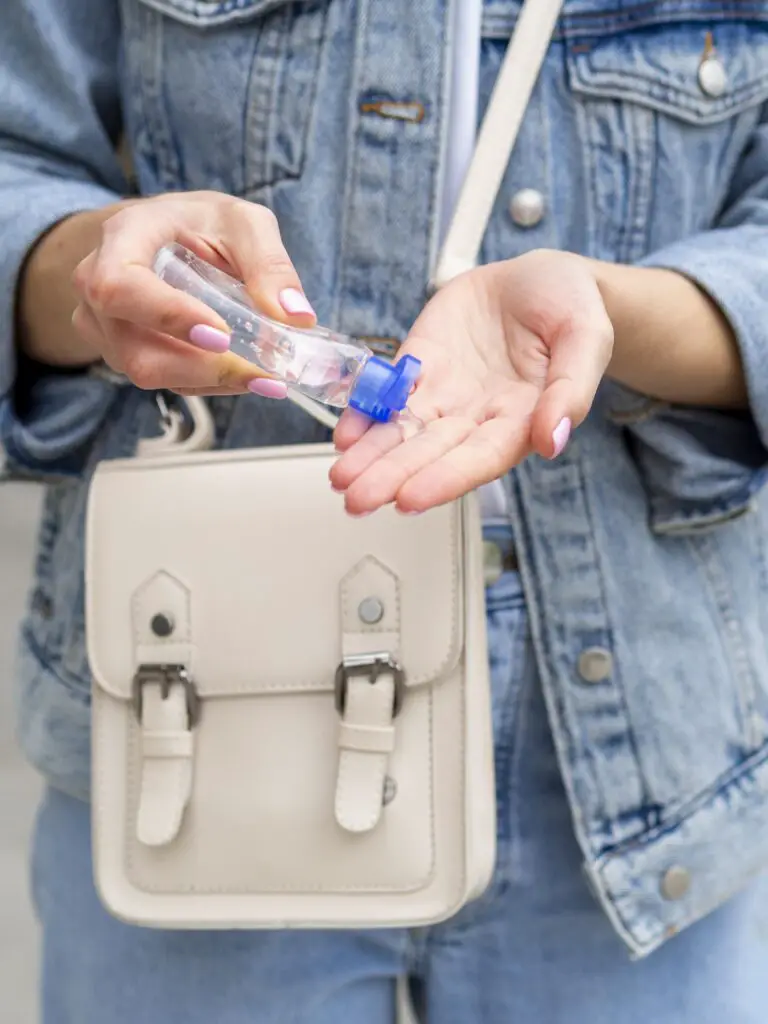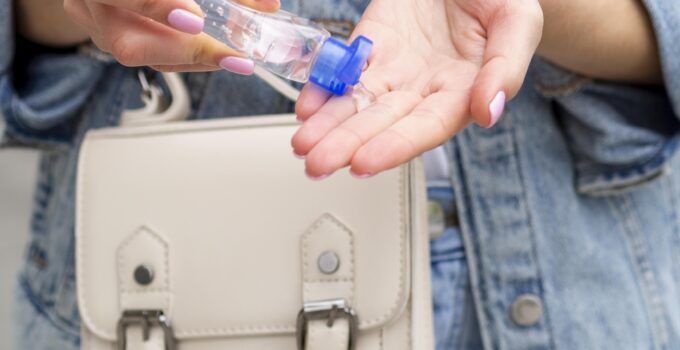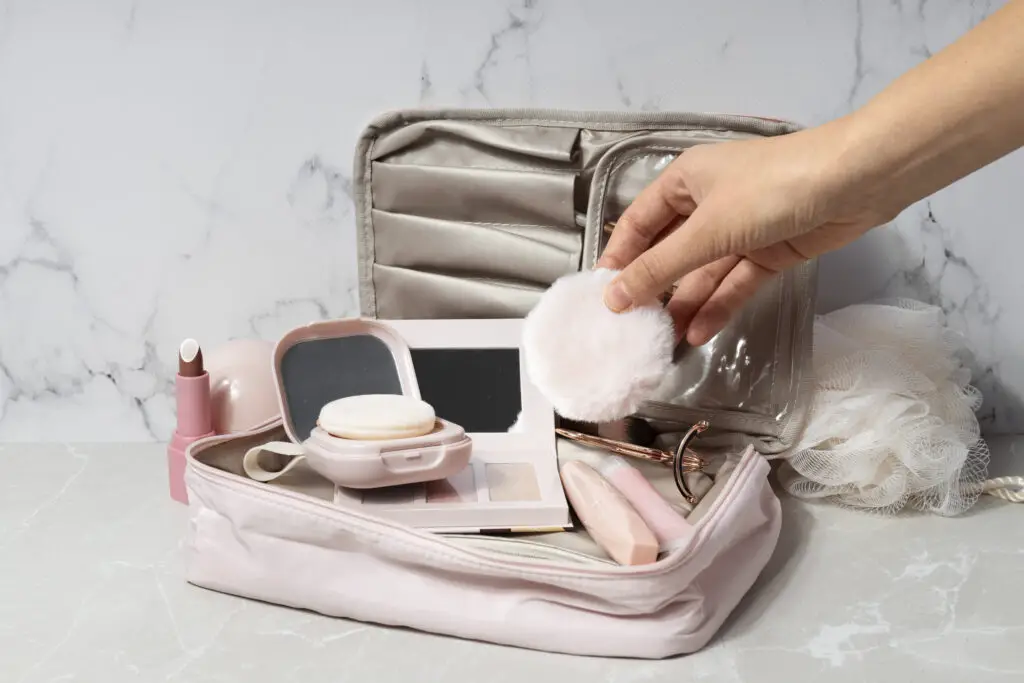Are you worried about moisture damaging your camera equipment? Using silica gel in your camera bag can be an effective way to protect your gear from humidity.
Silica gel is a desiccant that absorbs moisture, helping to prevent mold, mildew, and corrosion.
By placing silica gel packets inside your camera bag, you can create a dry environment that safeguards your lenses, camera body, and other accessories.
This simple and affordable solution is essential for photographers who frequently work in humid conditions or store their gear for extended periods.
Let’s explore the best practices for using silica gel effectively in your camera bag.
Here how to make fanny pack camera bag?
What is silica gel?
Why to use silica gel?
Silica gel is used primarily for moisture control and preservation in various applications. Its ability to absorb humidity makes it essential for protecting products from mold, mildew, and degradation.
Commonly found in packaging for electronics, food, and pharmaceuticals, silica gel helps extend shelf life and maintain quality.

In addition to packaging, it is used in laboratories to keep chemicals stable, in air purifiers to enhance air quality, and in desiccators to maintain dry environments. Silica gel is also effective in preventing rust and corrosion in tools and equipment.
Here, how to remove mold from camera bag?
Moreover, it can be easily regenerated by heating, allowing for multiple uses.
Its non-toxic nature makes it safe for various applications, though it should be kept away from children and pets due to its packaging. Overall, using silica gel is a simple and effective way to manage moisture and protect valuable items.
Is it important to use silica gel?
Using silica gel is important for maintaining product integrity and preventing damage caused by moisture.
In various industries, such as electronics, pharmaceuticals, and food packaging, excess humidity can lead to mold growth, corrosion, and degradation of quality.
Silica gel effectively absorbs moisture from the surrounding environment, helping to extend the shelf life of products and ensure they remain in optimal condition.
For example, electronics often include silica gel packets to prevent moisture-related failures, while food products benefit from moisture control to maintain freshness.
Additionally, in laboratories and storage settings, silica gel helps create dry environments essential for preserving sensitive materials.
While not always necessary for every item, incorporating silica gel can significantly enhance product longevity and reliability. Ultimately, its use is a simple yet effective measure to safeguard against the adverse effects of humidity.
Is it worth to use silica gel?
Yes, using silica gel is often worth it due to its effectiveness in moisture control and protection of various products.
By absorbing humidity, silica gel helps prevent mold, mildew, and corrosion, thereby extending the shelf life and maintaining the quality of items like electronics, pharmaceuticals, and food.
This can save money in the long run by reducing spoilage and product failure.
Additionally, silica gel is inexpensive and easy to use, making it a cost-effective solution for both consumers and businesses.
Here, how to use your dividers in your camera bag?
Its versatility allows it to be employed in various settings, from packaging to laboratory environments. Regenerable through heating, silica gel can be reused multiple times, adding to its value.
While not always essential, incorporating silica gel into storage and packaging processes can significantly enhance product reliability and longevity, making it a worthwhile investment for many applications.
Things to know before using silica gel in camera bag
How to use silica gel in camera bag?
To use silica gel effectively in a camera bag, start by selecting the right type and size of silica gel packets.
Opt for small packets, ideally around 1-2 grams each, to fit easily in pockets or compartments. Place them strategically throughout the bag, ensuring they are distributed evenly to maximize moisture absorption.
Position packets away from direct contact with the camera and lenses to avoid any potential dust or residue. Regularly check the packets for saturation; many change color when they are full and need replacement or regeneration. To regenerate, simply heat the packets in an oven at a low temperature (about 200°F or 93°C) for a few hours.
Additionally, store your camera bag in a cool, dry place when not in use. By following these steps, you can effectively protect your camera gear from moisture, ensuring optimal performance and longevity.
9 steps to use silica gel in camera bag?
Step 1: Choose the Right Silica Gel
Select silica gel packets specifically designed for moisture absorption. Look for food-grade or non-toxic options to ensure safety. Opt for small packets (1-2 grams) that can easily fit into various compartments of your camera bag. Avoid larger packets, as they may take up too much space and can be less effective in smaller areas.
Step 2: Assess Your Camera Bag
Evaluate your camera bag’s compartments and design. Identify pockets or areas where moisture might accumulate, such as near the bottom or in enclosed spaces. Understanding the layout will help you strategically place the silica gel packets for maximum effectiveness.
Step 3: Distribute the Packets Evenly
Place the silica gel packets throughout the camera bag, ensuring they are evenly distributed. Aim for at least one packet in each compartment that holds gear, such as camera bodies, lenses, or accessories. This ensures consistent moisture control across the entire bag.
Step 4: Avoid Direct Contact with Equipment
While placing the packets, ensure they do not come into direct contact with your camera or lenses. This prevents potential dust or residue transfer to sensitive equipment. Instead, position them in corners or less-accessible areas of the bag.
Step 5: Monitor Packet Saturation
Regularly check the silica gel packets for saturation. Many types change color when they are full, indicating they need replacement or regeneration. Make it a habit to inspect them every few months, especially in humid environments.
Step 6: Regenerate Saturated Packets
If your silica gel packets become saturated, regenerate them to restore their moisture-absorbing capabilities. Place them in an oven at around 200°F (93°C) for a few hours. This process drives out the absorbed moisture, allowing you to reuse the packets effectively.
Step 7: Store the Camera Bag Properly
When not in use, store your camera bag in a cool, dry place. Avoid damp basements or hot attics, as these environments can introduce moisture. Proper storage enhances the effectiveness of the silica gel and protects your equipment.
Here, is it safe to pack a camera bag in a checked luggage when going through airpot security?
Step 8: Replace Packets as Needed
Silica gel packets have a lifespan and will need replacement over time, even with regeneration. Keep a supply of fresh packets on hand to swap out saturated ones promptly. This ensures continuous protection for your camera gear.
Step 9: Educate Yourself on Humidity Levels
Stay informed about the humidity levels in your area, especially if you frequently shoot in different environments. Understanding local humidity can help you determine how many silica gel packets to use and how often to check them, ensuring your camera gear remains safe and dry.
5 Methods to use silica gel in camera bag
5 Benefits to use silica gel in camera bag
1. Prevents Moisture Damage
One of the primary benefits of using silica gel in a camera bag is its ability to prevent moisture damage.
Cameras, lenses, and electronic equipment are particularly susceptible to humidity, which can lead to mold growth, corrosion, and fogged lenses. Silica gel acts as a powerful desiccant, absorbing excess moisture from the air within the bag.
By placing silica gel packets in your camera bag, you create a drier environment that helps protect sensitive components.
This is especially important in humid climates or during wet weather when moisture levels can spike dramatically. Regularly monitoring and replacing saturated packets ensures that your equipment remains safe and dry.
This preventive measure can significantly extend the lifespan of your gear, saving you from costly repairs or replacements.
Ultimately, using silica gel is a simple yet effective strategy for maintaining the integrity and functionality of your camera equipment over time.
2. Enhances Equipment Longevity
Using silica gel in your camera bag can significantly enhance the longevity of your equipment.
Here, 10 best tamrac camera bag.
Cameras and lenses are considerable investments, and protecting them from environmental factors like moisture is crucial for their durability. Silica gel works by absorbing humidity that could lead to mold, corrosion, or other forms of degradation.
By maintaining a dry environment within your camera bag, silica gel helps to keep internal components functioning optimally.
For instance, moisture can cause electrical malfunctions, while excessive humidity can lead to lens fogging, which impacts image quality. By mitigating these risks, silica gel allows your equipment to perform better for longer.
Moreover, the preventive nature of silica gel means fewer unexpected repairs or replacements, ultimately saving you money.
Regular use of silica gel not only safeguards your equipment in the short term but also contributes to its long-term reliability, ensuring that your gear remains ready for any shooting opportunity.
3. Cost-Effective Solution
Silica gel presents a cost-effective solution for protecting your camera equipment from moisture.
These small packets are relatively inexpensive and can be easily purchased in bulk. Given the high cost of camera gear, investing in silica gel is a minor expense compared to potential repair costs associated with moisture damage.
The longevity of silica gel packets also contributes to their cost-effectiveness.
Many silica gel packets can be reused multiple times through a simple regeneration process, which involves heating them in an oven to drive out absorbed moisture. This means you can enjoy ongoing protection without needing to frequently purchase new packets.
Additionally, by preventing damage to your equipment, silica gel helps avoid expensive repairs or replacements.
The small initial investment can lead to substantial savings in the long run, making silica gel not only a practical but also an economically wise choice for photographers and videographers.
4. Easy to Use and Maintain
Another significant benefit of using silica gel in your camera bag is the ease of use and maintenance.
Incorporating silica gel into your gear setup requires minimal effort and can be seamlessly integrated into your routine. Simply place the packets in various compartments of your bag, and you’re set.
Maintenance is equally straightforward. Regularly checking the packets for saturation is a simple task, and many silica gel products come with color indicators that change when they need replacing or regenerating.
The regeneration process itself is quick and easy—just heat the packets in an oven, and they’re ready to use again.
This simplicity makes silica gel an accessible solution for photographers of all levels.
Whether you’re a professional or an amateur, you can effectively protect your camera equipment without the need for complicated procedures or specialized knowledge. This user-friendly aspect enhances the overall value of silica gel as a protective measure.
5. Versatile Application
Silica gel’s versatility is another significant benefit, making it suitable for various applications beyond just protecting camera equipment.
While its primary role is moisture absorption in camera bags, silica gel can be used in other storage scenarios, such as in electronic devices, food packaging, and even closets.
For photographers, this means you can apply the same moisture control strategy to other gear, such as lenses, tripods, and even photography-related accessories stored in different locations.
Additionally, silica gel can be beneficial in home storage areas for protecting valuable items from humidity, including collectibles, important documents, and other sensitive electronics.
This versatility not only provides broader moisture protection but also makes silica gel a convenient option for anyone looking to maintain a dry environment in various settings.
By leveraging silica gel across multiple applications, you can effectively safeguard a wide range of items, maximizing its overall utility and value.
Here, how to attached straps to polaroid camera?
How do you put Silica Gel in your camera bags?
Related faq’s
How useful is silica gel for protecting SLR cameras against condensation from changes in temperature?
Silica gel is extremely useful for protecting SLR cameras against condensation caused by temperature changes.
When transitioning between environments, such as from cold to warm, moisture can accumulate inside the camera. Silica gel absorbs excess humidity, helping to prevent condensation on the camera body and lenses.
This reduces the risk of mold growth and internal damage. By maintaining a drier atmosphere within the camera bag, silica gel enhances the longevity and reliability of your equipment.
Regularly checking and replacing saturated packets ensures effective moisture control, making silica gel an essential accessory for photographers facing temperature fluctuations.
Can I put silica gel packets to my DSLR camera bag to keep the camera moisture free?
Yes, you can definitely put silica gel packets in your DSLR camera bag to keep it moisture-free.
Silica gel effectively absorbs excess humidity, helping to prevent mold growth and condensation on your camera and lenses.
Place several small packets in various compartments of the bag, ensuring they are evenly distributed for optimal moisture control.
Regularly check the packets for saturation and replace or regenerate them as needed. By using silica gel, you can significantly enhance the protection of your camera gear, especially in humid environments or during temperature changes.
Should I keep Silica Gel packets in my Camera Case?
Yes, you should keep silica gel packets in your camera case. Silica gel effectively absorbs moisture, helping to prevent condensation, mold growth, and damage to your camera and lenses.
By placing several packets in your camera case, you create a drier environment that protects your gear, especially in humid conditions or during temperature changes.
Ensure the packets are regularly checked for saturation and replaced or regenerated as needed.
Using silica gel in your camera case is a simple yet effective way to safeguard your equipment and extend its lifespan.
How to use Silica Gel to Protect DSLR?
To use silica gel to protect your DSLR, start by placing small silica gel packets in your camera bag and case.
Distribute the packets evenly across compartments to ensure optimal moisture absorption. Regularly check the packets for saturation; many change color when they need replacing or regenerating.
To regenerate, heat the packets in an oven at around 200°F (93°C) for a few hours.
Additionally, store your DSLR in a cool, dry place when not in use. By incorporating silica gel, you help prevent condensation, mold, and damage, ensuring the longevity of your camera equipment.
How to use silica gel in bags?
To use silica gel in bags, start by selecting small silica gel packets suitable for moisture absorption.
Place a few packets in different compartments of the bag, ensuring even distribution for optimal moisture control. Avoid direct contact with items to prevent dust accumulation.
Regularly check the packets for saturation; many change color when they need replacing or regenerating. To regenerate, heat the packets in an oven at around 200°F (93°C) for a couple of hours.
This simple practice helps protect your belongings from mold, mildew, and moisture damage, ensuring they remain in good condition.
How much silica gel to use for a camera?
For a camera, it’s recommended to use 2-4 small silica gel packets (1-2 grams each) depending on the size of your camera bag and the humidity level in your environment.
Place one packet in each main compartment, ensuring even distribution to effectively absorb moisture. If you’re storing multiple lenses or accessories, consider adding extra packets for additional protection.
Regularly check the packets for saturation and replace or regenerate them as needed.
This approach helps prevent condensation and mold growth, keeping your camera equipment safe and in optimal condition.
Is silica gel good for cameras?
Yes, silica gel is excellent for cameras. It effectively absorbs moisture, helping to prevent condensation, mold growth, and damage to sensitive components.
By placing silica gel packets in your camera bag or case, you create a drier environment that protects your gear, especially in humid conditions or during temperature changes.
Regularly monitoring and replacing or regenerating the packets ensures ongoing moisture control.
Overall, using silica gel is a simple yet effective way to safeguard your camera equipment, extending its lifespan and maintaining optimal performance.
How to keep a camera bag dry?
Anyone else use Silica Gel satchels in their camera bag to remove moisture?
Yes, many photographers use silica gel satchels in their camera bags to remove moisture.
This common practice helps protect camera gear from humidity, preventing issues like condensation, mold growth, and corrosion.
Professional and amateur photographers alike rely on silica gel for added moisture control, especially in humid environments or during temperature changes.
By placing several packets in their bags, they ensure a drier atmosphere that enhances the longevity and reliability of their equipment.
It’s a simple yet effective solution embraced by the photography community to maintain optimal conditions for their valuable gear.
Do I need to use silica gel packs when storing lens in a Pelican case?
Yes, using silica gel packs when storing lenses in a Pelican case is highly recommended. Silica gel helps absorb moisture, preventing condensation and mold growth that can damage your lenses over time.
Even though Pelican cases are durable and offer good protection, they can still retain humidity, especially in varying temperatures. By placing a few silica gel packets inside the case, you create a drier environment that safeguards your lenses.
Regularly check the packets for saturation and replace or regenerate them as needed to ensure ongoing moisture control and optimal protection for your valuable equipment.
Dont’t throw away annoying Silica gel little pockets, that come along with new electronic devices, shoes, or purses. Silica gel can prolong the life of anything that would be affected by excess moisture or condensation. Here’s what you can use them for:
Don’t throw away those silica gel packets that come with new electronics, shoes, or purses! They can significantly prolong the life of items affected by excess moisture.
Use them in your camera bag to protect lenses and gear from humidity. Place them in storage boxes to keep documents and collectibles dry.
Add them to toolboxes to prevent rust on metal items. You can even toss them in your gym bag to absorb sweat and moisture. Silica gel packets are versatile and effective, making them a valuable addition to any storage solution.
Conclusion:
Using silica gel in a camera bag is a simple and effective way to protect your gear from moisture damage.
Place several small packets in different compartments of the bag, ensuring they are evenly distributed for optimal moisture absorption.
Regularly check the packets for saturation and replace or regenerate them as needed to maintain their effectiveness. Additionally, store your camera bag in a cool, dry place to enhance protection.
By incorporating silica gel into your camera bag, you can prevent condensation, mold growth, and corrosion, thereby extending the lifespan and performance of your valuable camera equipment.








